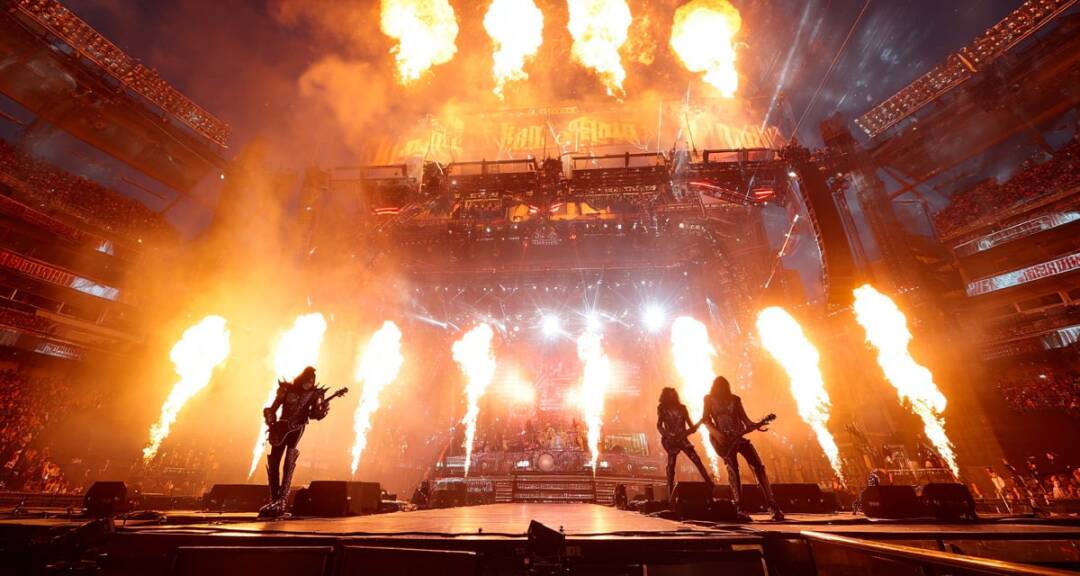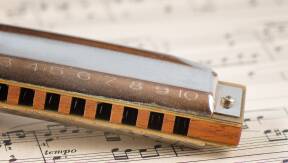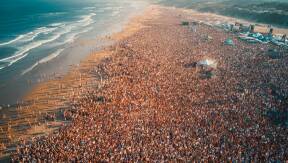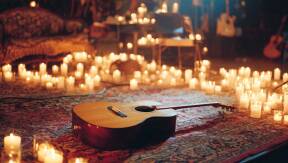Have you ever stood in a crowd, the lights blinding, the bass shaking your chest, and felt the stage come alive with fire and sound? That electrifying thrill, equal parts music and mayhem, owes everything to rock. Long before pop stars or DJs added pyrotechnics to their acts, it was rock bands who pioneered the idea that a concert could be an unforgettable performance.
When Fire Met Amplifiers
It started in the 1960s with Arthur Brown. Not content with simply singing, he wore a flaming helmet on stage during his hit song "Fire." It was theatrical, outrageous, and totally new. Brown showed the world that a live show could be more than music, it could be visual, shocking, even dangerous.
Then came Keith Moon of The Who, who literally put explosives in his drum kit during a live TV show. The result? A massive blast that sent shockwaves across the industry, literally and culturally. Suddenly, the stage wasn't just for playing songs. It was a canvas for chaos.
KISS, Stadiums, and Maximum Impact
The 1970s saw KISS crank everything to eleven. Their tours were packed with fireworks, blood-spitting, smoke machines, and more. For them, a show wasn’t just about promoting an album, it was about giving fans something bigger than life. Their use of sound, light, and spectacle set the tone for generations of performers to come.
Soon, everyone from Bruce Springsteen to AC/DC was filling stadiums, pushing rock shows into the realm of mythology. With screaming fans, roaring amps, and charismatic frontmen like Mick Jagger, every night felt like history in the making. A rock night became more than a show, it was a real life experience.
From Hendrix to the Stones: Shaping the Modern Show
Jimi Hendrix didn’t just play the guitar, he burned it. His performance at Monterey Pop Festival, where he lit his instrument on fire, became one of the most iconic images in rock history. The Rolling Stones, with their mix of swagger and spectacle, continued to redefine what a concert could be.
By the time the Beatles took the stage at Shea Stadium in 1965, the sheer volume of screaming fans made it impossible to hear the music, but that didn’t matter. The audience had become part of the performance.
What Modern Shows Owe to Rock
Today’s pop stars and festival DJs rely on the very elements that rock invented, blinding visuals, wall-shaking sound, pyrotechnics, and crowd interaction. Scroll through any YouTube video from a big festival and you’ll see it: the flames, the flashing lights, the massive drops, all of it rooted in what the early rockers built. It’s everywhere. Images on Instagram, Tiktok, the crowd love it and artists know it.
Even high-tech crowd lighting systems at major events are just the digital descendants of the raw energy and rebellion that once defined a rock concert.
More Than Just a Show
Whether it’s Springsteen connecting with every person in a 60,000-seat arena, or a black-clad metal band melting faces with distortion and smoke, the heart of the live experience hasn’t changed: it’s about impact. About sharing a night so intense it becomes part of your story.
So next time you're surrounded by visuals and sound that seem too big to believe, just remember, it all started with a band, a stage, and a wild idea to set the night on fire.



